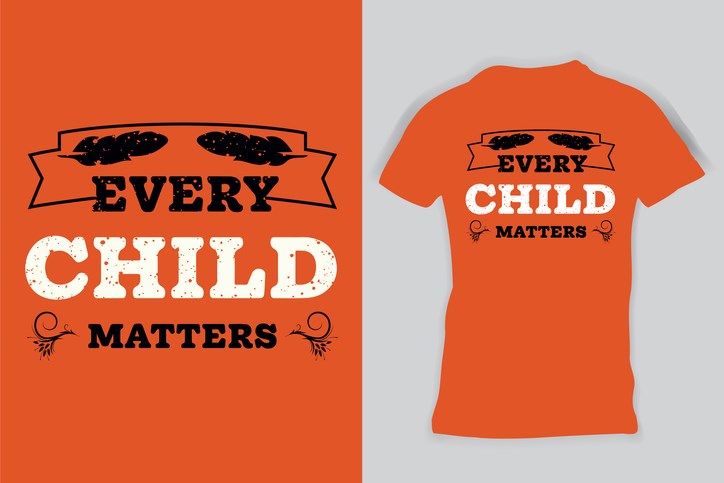ESTEVAN - Schools will remain open in the Holy Family Roman Catholic Separate School Division and the South East Cornerstone Public School Division on Sept. 30, which is a federal holiday to mark the Day for Truth and Reconciliation.
But both divisions have activities planned to mark the significance of Sept. 30.
Terry Jordens, the superintendent of student services and assessment for Holy Family, said they have worked with their Catholic school division partners from across the province to create prayers and morning announcements for the entire week.
“Each of our schools, beginning today, started with special announcements and opening prayer and reading from the Bible, and some reflection questions to honour the occasion of Orange Shirt Day,” said Jordens.
Students are participating in a virtual treaty fair all week with the Prince Albert Grand Council, and are doing their own things within the classroom.
At the division office, Holy Family is participating in the Feathers’ project, working with Pro Metal Industries out of Regina – an Indigenous-owned metal shop that is creating orange and black feathers made from metal. A set of feathers will be purchased for each school.
“These are the same feathers that are going to be used as grave markers in some of the old residential school sites,” said Jordens.
The division thought it was important for the students to be in the classroom and honouring Indigenous peoples the best way possible, with special activities in each school.
“We work with a traditional knowledge keeper, Lyndon J. Linklater, and he is going to be preparing a special message and story teaching for our students that is going to be played at our Orange Shirt Day assemblies for all of our kids,” said Jordens.
Holy Family has expanded its diversity and knowledge in the area, with Linklater working closely with them. There are land acknowledgements for treaty lands before all events, and the school division has been working with various projects throughout the schools that kids are doing during the year.
The South East Cornerstone Public School Division also has activities planned within its schools.
Michael Graham, the curriculum co-ordinator for South East Cornerstone, said the school division decided to keep schools open because this is a federal holiday, and the school division is under provincial jurisdiction.
“Our calendar is developed on an annual basis, so that could be an item for discussion going forward,” said Graham.
Raquel Oberkirsch, the instructional coach for Indigenous and treaty education at Cornerstone, said staff and students will be wearing orange on Sept. 30 to show their support for truth and reconciliation.
Students will engage in learning opportunities related to the history of residential schools, the ongoing intergenerational impacts and action that can be taken.
“Different schools have planned different things. Some schools are participating in live events, such as a Truth and Reconciliation Week that’s hosted by the National Centre for Truth and Reconciliation,” said Oberkirsch.
A live Zoom event will happen with Matthew Spencer, a Nakota educator from the Kerry the Kettle First Nation, giving students a more Saskatchewan-based option.
An Indigenous People’s Atlas of Canada giant floor map has been rotating through different schools in September, giving schools the chance to allow students to locate different residential school sites. There’s also a timeline that goes around the map with residential school history.
Oberkirsch has been working with different schools for activities, such as using MineCraft to do some building of residential school monuments and talk about commemorating these sites; sound poetry using novels about residential schools; feather wreaths in which each feather represents a Saskatchewan residential school site and provides an opportunity for research; and watching videos and documentaries with residential school survivors.
“Some schools are doing heart gardens, which basically the students designed hearts with messages for residential school survivors, and then they put those hearts onto a popsicle stick or a larger stake, and they plant them around the school to make the heart garden,” Oberkirsch said.
Cornerstone believes they need to be teaching truth before moving to reconciliation, she said.
“For truth, that means learning the hard truths of Canadian history, so things like unfulfilled treaty promises, the Indian Act, residential schools and the ’60s Scoop, and then also ongoing issues like missing and murdered Indigenous women and girls, the over-representation of Indigenous children in foster care, and other inequities for First Nations’ children and families for things like health care, education and clean drinking water.”
For reconciliation, it’s about building strong, positive relationships, she said, between Cornerstone schools and local First Nations such as White Bear, Pheasant Rump and Ocean Man, which fall within Cornerstone’s boundaries.
Among the projects are students at Arcola School created a Truth and Reconciliation mural, with guidance from community members at Pheasant Rump; Gordon F. Kells High School worked with artist Michael Lonechild on a mural that depicts treaty negotiations; Stoughton Central School and Elder Pete Bigstone invited staff members to learn to do a teepee raising; the Estevan Comprehensive School completed a reconciliation garden in the school’s courtyard in February 2020; and the Carlyle Elementary School held a memorial walk in June in memory of those who died through residential schools.
“We think it’s very important for South East Cornerstone staff members to attend and participate in community events,” said Oberkirsch.
The division reports on treaty education outcomes on report cards. Oberkirsch’s role has been created. Cornerstone has increased professional development opportunities, which staff completed. They just invested in resources for Indigenous education in the past few years. Teachers are encouraged to use the treaty education learning resource from the office of the treaty commissioner.








